The average rainfall ranges around 300 mm with the highest values in spring and autumn. During the warm months prevailing winds blow from the West and South-East and during the cold months the winds blow from South-West.
Relatively high levels of water salinity range from 42 - 47 ‰, while in the Mediterranean Sea the salinity is 36 - 37 ‰.The temperature of water in the winter reaches up to 12°C and up to 30°C in the summer. However, in the coastal surface waters, the variations might be higher.
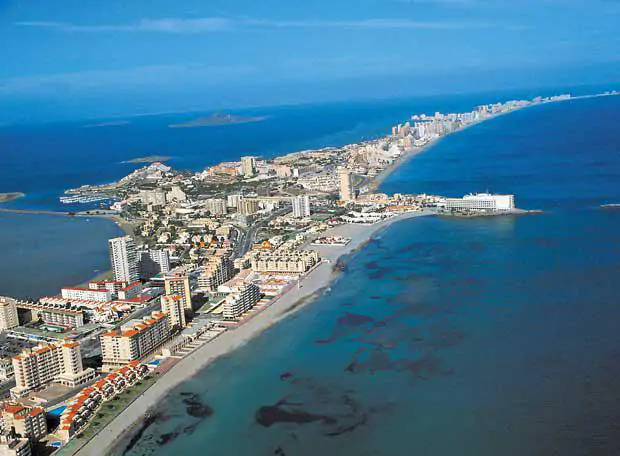
La Manga was formed from accumulation of sands dragged by sea currents. The sediments colliding with volcanic formations were conducive to vegetation and originated the creation of Mar Menor (the Minor Sea). It has been established from the ruins in El Estachio that La Manga used to be a fishing village as the remains found in the water prove.
The bottom of the sea in La Manga hides many remains of Phoenician, Greek and Roman ships, which were used to transport ingots of silver and lead, amphoras and other merchandise.
The arrival of Arabs originated a new method of fishing which is still used today. With the help of a cane and a stake, roaches and other species of fish that live in Mar Menor were caught.
After the expulsion of the Moors, La Manga was sieged by the ships of Magrebs which destroyed the coastline. To defend themselves against the attacks, the Emperor Carlos V and his son Philip II ordered the construction of three watchtowers in La Manga and one in Cabo de Palos.
Beginning in the Middle Ages, the vast terrains of pine, oak and yew forests were gradually decimated. The 18th century was the time of intensified exploitation of wood and brushwood, which added to the rate of deforestation, aided by the strong wind.
It is a narrow, 22- kilometre long stretch of dunes which closes the Mar Menor. This beautiful tongue of land is on average only 100 metres wide and has 1,5 km at its widest point.
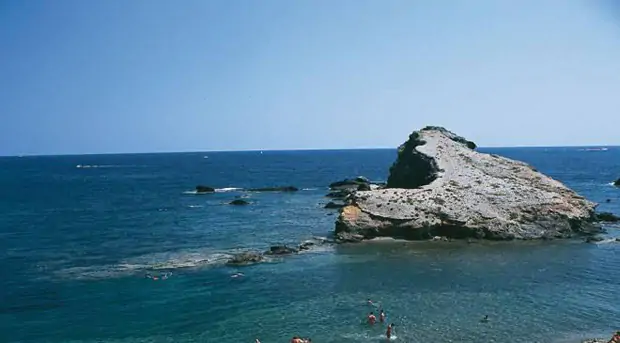
There are four channels here which allow waters to flow from the Mar Menor into the Mediterranean Sea and back. The borders of the La Manga lagoon mark out two important natural terrains- in the north San Pedro Saltworks Nature Reserve and in the south Marchamalo Salinas and Amoladeras nature reserves.
The beaches of La Manga spread over 44- kilometre area. There is a clear contrast between the beaches on the Mar Menor and the Mediterranean Sea.
The beaches are clean and the water is almost crystal clear, you can see many blue flags here, which were awarded by the European Union.
Because of shallow and calm waters without waves, Mar Menor is an ideal place to practise all kinds of watersports. The creation of the Marine Station has affected the quality of the sports facilities which offer possibilities for all levels, from beginners to professional trainings.
In La Manga there are eleven easily accessible sailing schools, where you can practise water sports.
Moreover, in La Manga there are four marinas which offer all necessary services to satisfy the needs of the boats and their crews. The calm waters of the Mar Menor are the best place to start training in watersports.
The high temperature of the water and their shallowness make it easier and safer to learn than on the open sea.
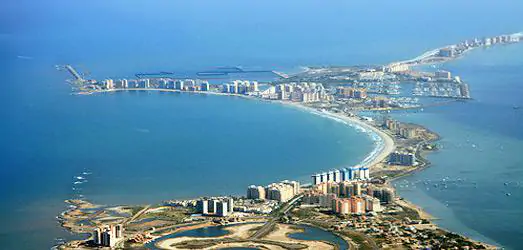
However, through the Estacio channel you can sail out of the Mar Menor and spend a pleasant day visiting the Grosa island, the Farallon Islands or the Hormigas.
Swimming enthusiasts can always be sure that the waters will be calm. The mildness of the climate ensures warm waters. Prevailing winds, so popular with sailing enthusiasts, blow only on one of the shores of La Manga, which ensures the waters will always be calm. Because of that, the actress, Esther Williams, during a visit to Mer Manor, described the lagoon as "the largest pool in the world".
In recent years diving has been more and more popular. The areas near La Manga and Cabo de Palos have become one of the favourite diving places for Spanish divers, because of the presence of archaeological underwater remains, shipwrecks and other sites.
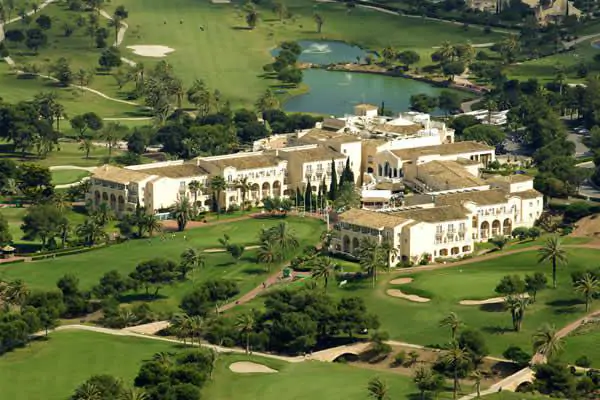
La Manga also offers many other sports beside watersports. There are a lot of sports clubs with tennis courts, rowing clubs, facilities for enthusiasts of squash, gokarting, skating etc. With the exception of Monte Blanco (White Mountain) area, La Manga is a perfect place for cycling, thanks to special cycling routes and a lack of sidewalks.
The nearby Cartagena mountain range and Calblanque Natural Park are perfect places for trekking and mountain biking. Moreover, there are also high quality golf courses and other sports centres specialising in extreme sports such as mountaineering. Many centres offer horse riding along mountain paths among citrus trees or along lonely beaches with lovely sand.
Airport transfers are becoming more and more popular. IDEAL company offers airport pick-ups at the time of your stay in Spain. Please, contact us in advance to set a date.
Just as the rest of the Mer Manor, La Manga takes pride in its gastronomy.
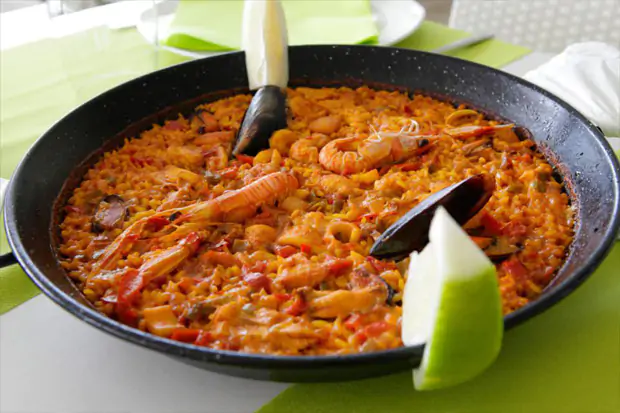
Most of the restaurants specialise in Mediterranean cuisine and offer all kinds of rice and fresh fish. El Caldero, a dish best known around the Mar Menor, comes from La Manga lagoon.
Among its dunes, local fishermen invented this tasty dish of cooked rice with pepper, garlic and fish.
Among the fish that are served here the best are sea bream and roach, grilled or cooked in salt. Dishes with fried fish are an important element of the Mar Menor gastronomy. The quality fruit and vegetables from Murcia gardens make all the dishes healthy.
A typical salad from Murcia (mojete murciano), vegetable zarangollo, peas or broad beans with ham are only a few of the regional specials. Delicious meat dishes are also served here, especially rabbit or chicken with traditional garlic stew (ajo cabanil).
The agriculture of the Mar Menor has significantly developed in recent years. Thanks to the Tajo-Segura transfer the irrigated area has increased which led to the improvement in the agricultural production of cereals, almonds, figs, tomatoes, peppers and many different plants. Currently, vegetable crops are expanding, for example zucchini, aubergine, celery or cucumber. You can taste many regional snacks such as: pickled tuna, salty bonito, tuna with raw broad beans or the famous Mar Menor lobster. Among cold meats, the outstanding ones are black pudding and dried sausage. The Jumilla broth is a perfect complementing for those dishes but it is best to consume it in moderation. La Manga also offers a variety of dishes from international cuisines. There are many restaurants with traditional cuisines from Germany, Belgium, Hungary, Czech Republic, Slovakia, Mexico or China, which undoubtedly are gastronomic attractions.
Together with seventeen beaches and the coves of Cabo de Palos, the enclave offers many forms of entertainment. Along the narrow strip of sand, there are a lot of places of historic and scenic value. Besides, there are day trips from the La Manga lagoon to other interesting places in Murcia.
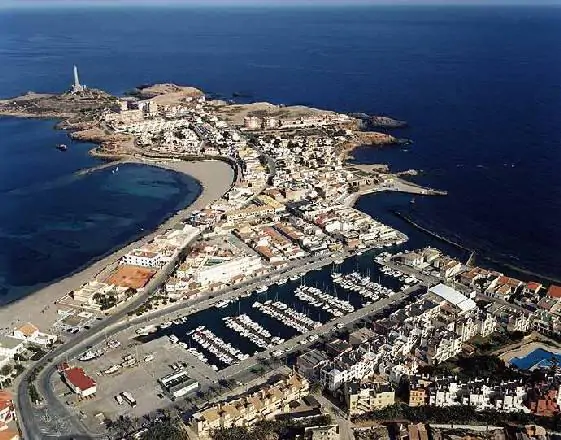
In La Manga there is a settlement called Las Amoladeras, the beginnings of which date back to the Neolithic. The autonomous community preserved the natural park construction reconstructing typical straw and brick huts. You can also visit the remains of Greek walls near Cala del Pino.
One of the landmarks of this region is the impressive lighthouse in Cabo de Palos from 1865 and the small lighthouse in Estacio which guards the entrance to the only navigable channel of Mar Menor.
Wetland enthusiasts can choose between two interesting places. The salinas in San Pedro del Pinatar in the north and the salinas of Marchamalo in the south. Admiring the sunset from the salt mines is an unforgettable experience.
The clear air and the variety of colours add to the beauty of the migrating birds that populate the terrains. Flamingos, avocets, storks, herons and ducks are the inhabitants of these places.
La Manga ends in an area called Veneciola, where the road finishes. The solitude of the beaches changes this area into a perfect place for those who seek peace in the nature.
You can admire the historic buildings of La Encanizada presenting the art of regional fishing and you can even see the canes that were used to catch cods and other species of the Mar Menor fish.
An interesting route to walk or cycle is the path leading from Cala Reona, through Cabo de Palos to Calblanque. From the town of Punta de Saleros to Punta Espada you can admire beautiful landscapes which make a strong impression.
Along the path there are a lot of specially marked mine shafts of astonishing depth. The flora here includes palm trees and aromatic plants such as lavender or thyme. The path ends in the beautiful beaches of Calblanque which are hidden from the crowds, with no buildings, surrounded only by mountains.
There is a motorway which leads from La Manga lagoon to Cartagena or Murcia. Art and history lovers must visit the museums and take a walk around the old streets of this city.
The historic town of Lorca offers visitors a chance to travel back in time. Mountain landscapes, castles and beautiful villas are marks on the north- western trail which extends over the towns of Mula, Bullas, Cehegin, Caravaca and Moratalla.
The Silk Route (La Ruta da la Seda) or a stay at the natural springs of Archena and Fortuna open new possibilities for those who want to fill their time with extra attractions.
Additional advantages are the clearness of the waters and the possibility of choosing which sea you want to swim in. The interchangeabillty of predominant winds: Levante (North- East) and Lebeche (South-West) ensures a calm and a safe swim even on windy days.
Other places offer health centres where you can take therapeutic mud baths under the care of trained employees. According to the research carried out by the University of Murcia, the mud baths in the Mar Menor are rich in minerals and have a great therapeutic effect. They help healing of wounds, alleviate skin and throat conditions, stimulate blood circulation and soothe inflammations. They are recommended for the treatment of arthritis, tendonitis and broken bones. The health centres also have hydromassage facilities, jacuzzi, saunas and air-conditioned pools.
The climate and the unique characteristics of the Mar Menor mean that a stay at any of La Manga's hotels is a health boost, which tourists can take advantage of in all seasons.